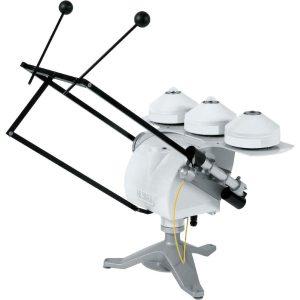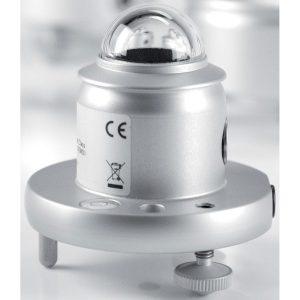Application Solar Pyranometer Radiation Sensor
A solar pyranometer/ Radiation Sensor is a device used to measure solar radiation flux density (in watts per square meter) from the sun. It’s a crucial tool in various fields like meteorology, climatology, solar energy research, and environmental monitoring. Here’s a breakdown of its components and application:
Components:
- Sensor: The sensor usually consists of a thermopile, photodiode, or thermocouple that converts incoming solar radiation into an electrical signal.
- Dome: The sensor is often housed in a dome to protect it from environmental factors like rain, dust, and wind while allowing solar radiation to pass through.
- Electronics: These include amplifiers, converters, and possibly data logging capabilities to process the electrical signal and convert it into usable data.
Working Principle:
When sunlight hits the surface of the Radiation Sensor, the sensor inside detects the radiation and generates a voltage proportional to the solar radiation intensity. This voltage is then converted into a measurement of solar irradiance.

Applications:
- Weather Forecasting: Used in weather stations to monitor solar radiation, aiding in weather prediction models.
- Solar Energy Systems: They help in assessing the potential of a location for solar energy generation and optimizing the performance of solar panels by tracking sunlight intensity.
- Climate Research: Pyranometers are essential in studying climate patterns and understanding the Earth’s energy budget.
- Agriculture: They assist in determining optimal planting times, estimating crop yields, and understanding the impact of sunlight on plant growth.
- Environmental Monitoring: Used to assess the impact of changes in land use, urbanization, and deforestation on solar radiation levels.
- Building Design: In architecture, pyranometers aid in designing energy-efficient buildings by analyzing the amount of solar radiation a structure receives throughout the year.
- Solar Radiation Mapping: They contribute to creating solar radiation maps, which are crucial for planning large-scale solar energy projects.

Considerations:
- Calibration: Regular calibration is essential to ensure accuracy since factors like sensor degradation and environmental conditions can affect readings.
- Mounting: Proper mounting and orientation are critical for accurate measurements. Pyranometers should be installed horizontally and kept clean to prevent debris from interfering with measurements.
- Data Logging: Many modern pyranometers come with data logging capabilities, allowing for continuous monitoring of solar radiation levels over time.
- Maintenance: Regular maintenance, including cleaning and inspection, helps prolong the lifespan and reliability of the instrument.


